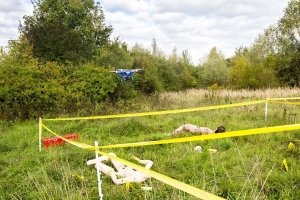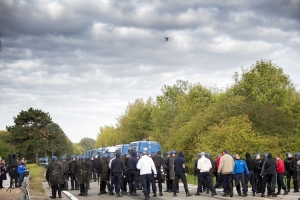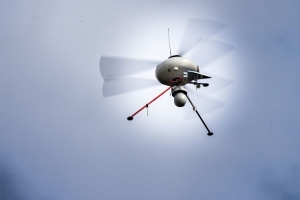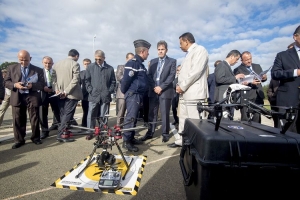The threats posed by the use of civil drones have been exemplified by several incidents in the last months: mid-air collisions between planes and drones in the vicinity of airports were just avoided; sensitive sites, such as nuclear plants, were illegally overflown by drones; etc.
To tackle this issue, a report was presented to the French Parliament in October 2015, assessing the risks and threats posed by these illegal flights. It proposes technical and capacity solutions so as to improve the detection and neutralisation of the drones. It also suggests legal adaptations so as to give a stronger legal framework to the use of civil drones, thus lowering the risks of this use.
In March 2016, a bill, inspired by this report, was presented to the French Senate; what is at stake is to put in the law what is necessary to strengthen the security of the use of civil drones without hindering this dynamic economic sector.
 Indeed, this sector has been growing rapidly in the last years. In France, there are currently around 40 civil drones manufacturers in a global market dominated by 2 enterprises: the Chinese DJI and the French society Parrot. Several major groups (Thales, Safran, Airbus, Dassault) are also investing massively in the sector of civil or military drones, through their R&D programs.
Indeed, this sector has been growing rapidly in the last years. In France, there are currently around 40 civil drones manufacturers in a global market dominated by 2 enterprises: the Chinese DJI and the French society Parrot. Several major groups (Thales, Safran, Airbus, Dassault) are also investing massively in the sector of civil or military drones, through their R&D programs.
Meanwhile, the leisure drones industry is also expanding. There are around 200,000 such drones in France, 98% of them being micro-drones (weighing less than 2kgs). The drones which are available can be used very simply and are within the reach of anybody. This has changed the rules of aircraft modelling, which used to be restricted to experts. Unlike professional users, the leisure drones users are fond of new technologies but do not know well the airspace rules, the risks posed by the use of these devices and the legal framework.
Moreover, as drones are less and less heavy and more and more powerful, the border between leisure and professional drones is blurred. The professionals tend to use consumer drones, whereas amateurs buy highly powerful drones which used to be restricted to professionals. They organise competitions with these drones, which are able to reach high altitudes, thus increasing the risks in terms of security.
 The answer of the State to this new threat is not only legal. It also includes a capacity part, which consists in the adaptation of the detection, identification and neutralisation means. Technological answers were tested in 2015 and are now being implemented. Some works are also conducted on the way how to organise the framework of the neutralisation of drones, while preventing the collateral damages and keeping the coherence with the national air defence system.
The answer of the State to this new threat is not only legal. It also includes a capacity part, which consists in the adaptation of the detection, identification and neutralisation means. Technological answers were tested in 2015 and are now being implemented. Some works are also conducted on the way how to organise the framework of the neutralisation of drones, while preventing the collateral damages and keeping the coherence with the national air defence system.
The bill which was presented aims at making the users of drones responsible of their acts and preventing any adverse use. It also intends to preserve the capability of the law to evolve quickly, as technology does, in close coordination with the professionals of the sector.
Article 1 aims at defining the notion of drone and pilot, and the scope of registration of drones.
Article 2 aims at imposing training courses to the pilots of aircraft models which are above a certain weight. This training could consist in online tutorials coupled with the registration procedure (modalities to be determined).
Article 3 creates the obligation, for the drones manufactures, to inform the user. This would go through the insertion of instructions for use, informing the user about the principles and rules to respect to use these devices in compliance with the law and regulations.
Article 4 aims at making the electronic and light signalisation of drones mandatory, when they are above a certain weight. This signalisation would allow the quick identification of cooperative drones so as to limit the risks of mistake.
Article 5 aims at punishing the illicit or malicious use of drones. It is about setting sufficient penalties in order to deter the users who are not really malicious from performing illicit flights, thus easing the identification of the events which pose a real threat.
In order to study this important issue, the FIEP Association has organised several drone-related meetings in the past few months:
– a seminar entitled “drones and intelligent vehicles: threats and opportunities for the security”
– a demonstration of the capabilities offered by these devices to the benefit of the general directors and commanders who attended the FIEP Summit in October 2015
– a presentation of the use of drones by security forces during the seminar held in February 2016 in Qatar entitled “the use of new technologies in the security of major events”.
You can read the full text of the bill here.



